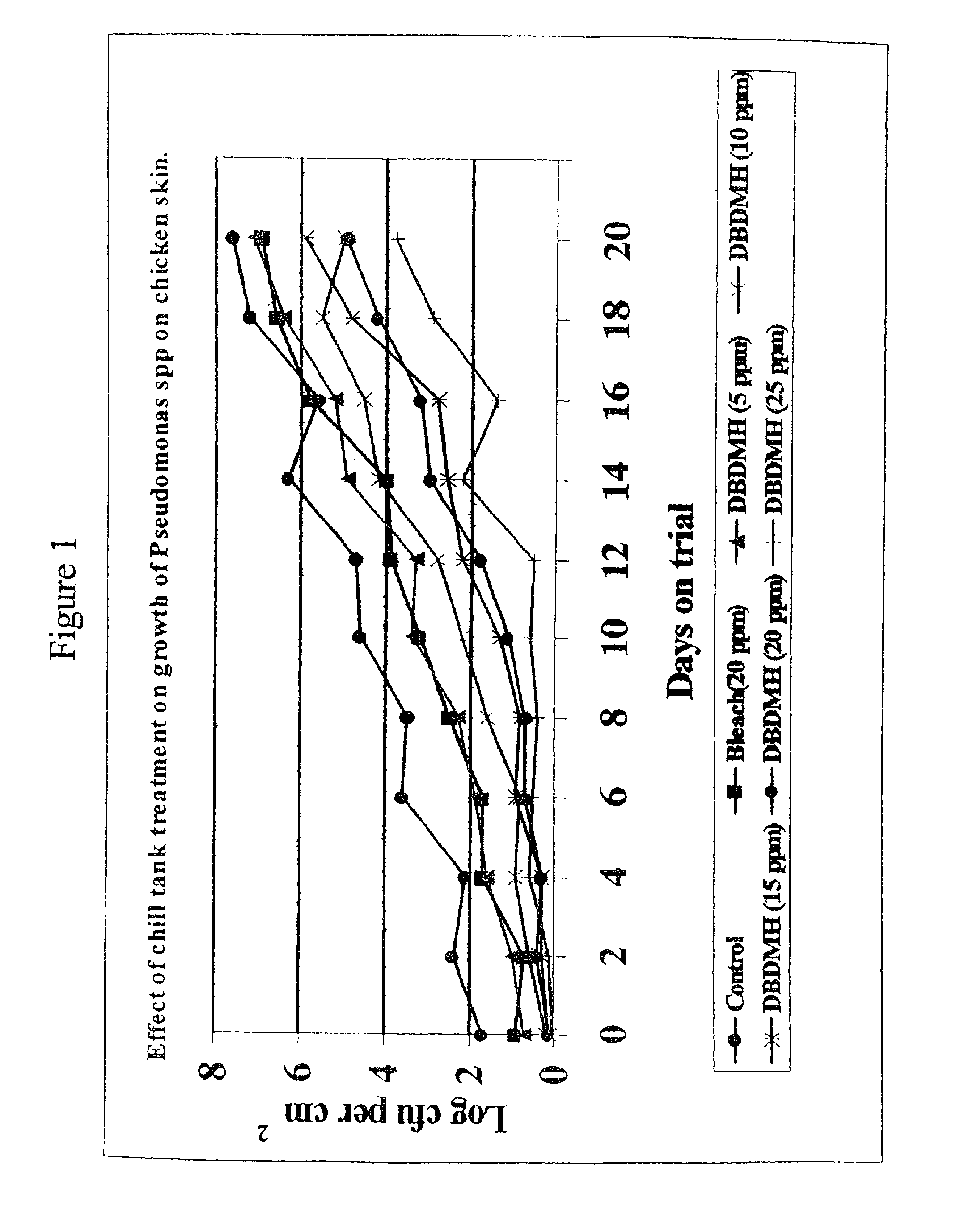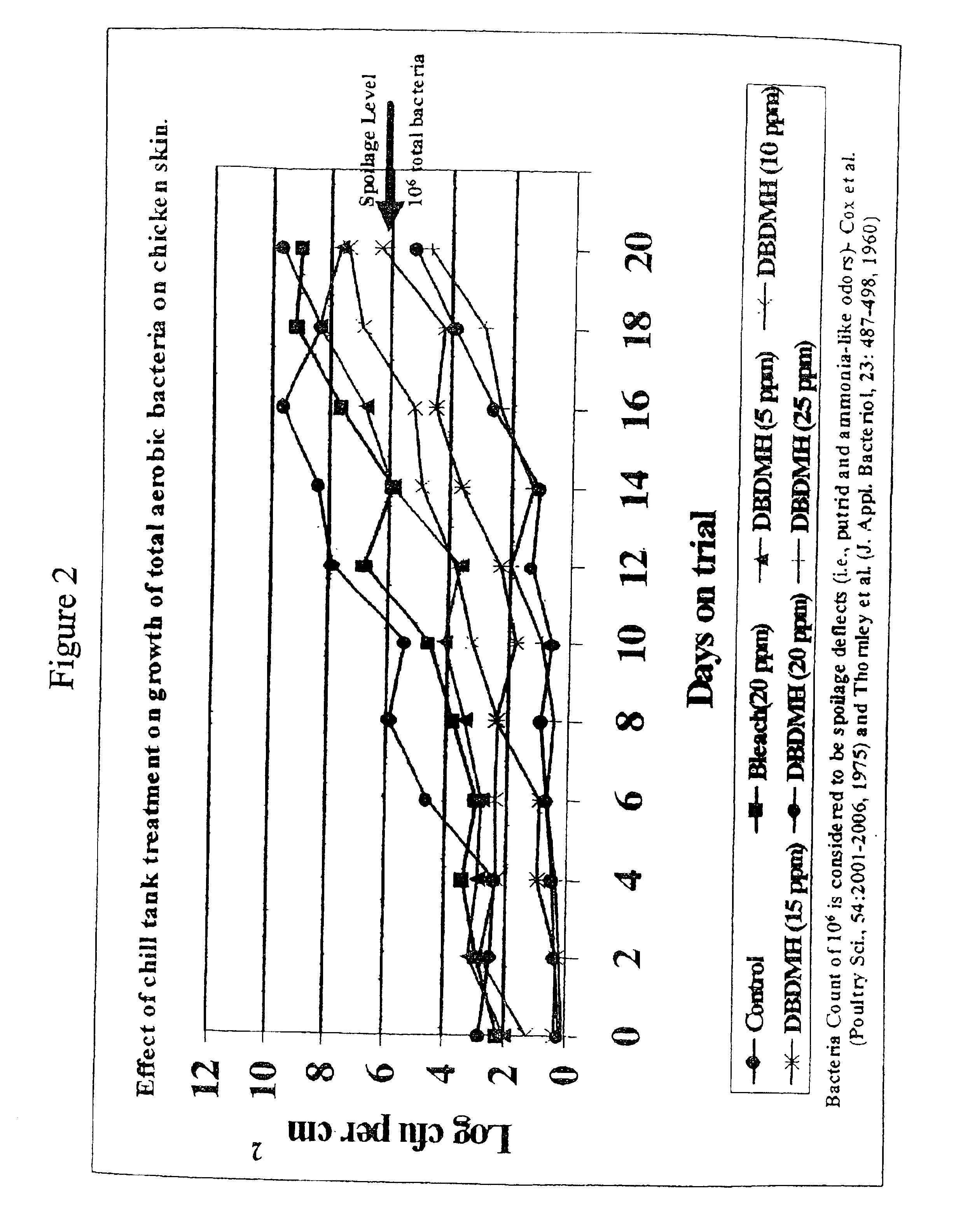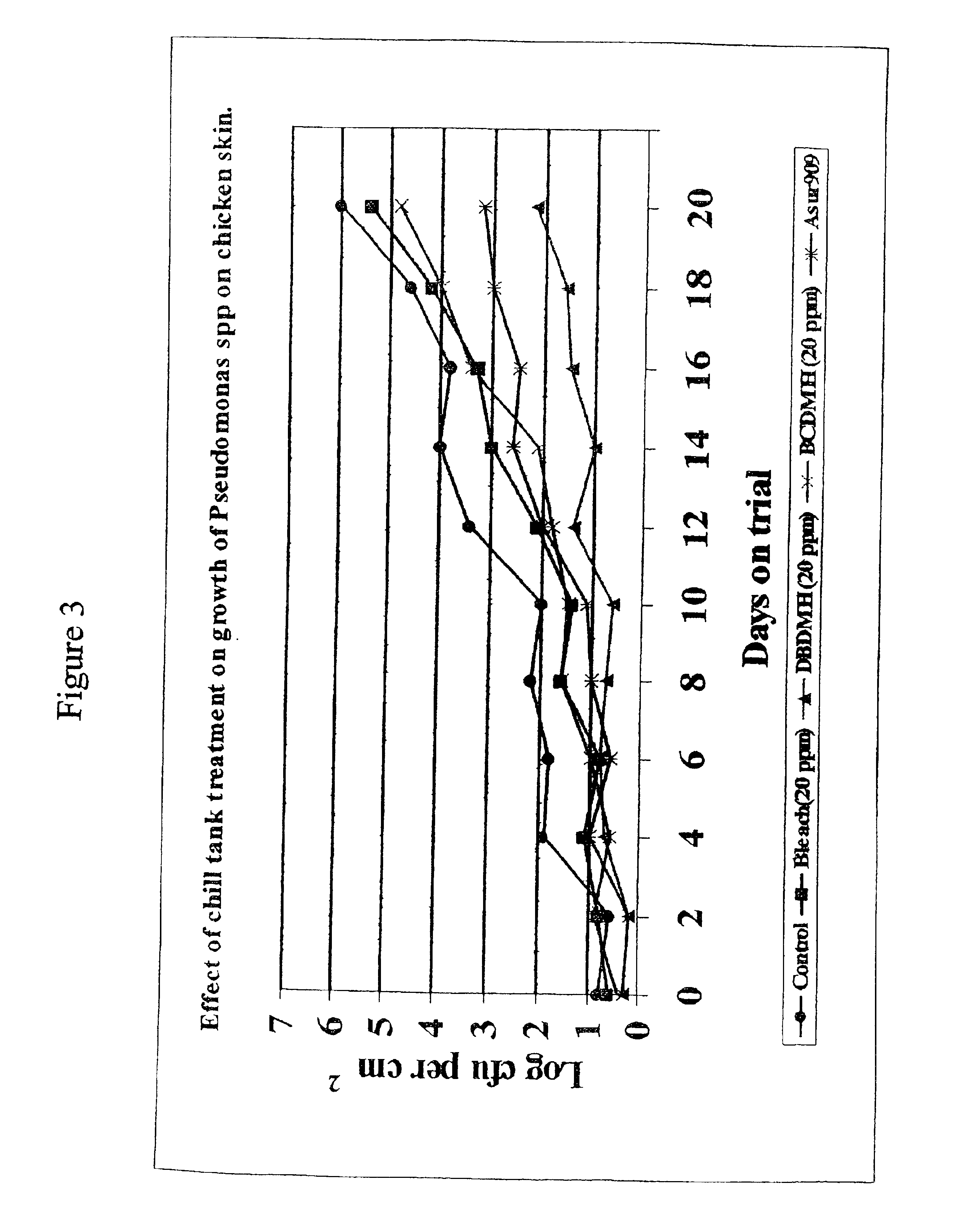Microbiological control in poultry processing
a technology for poultry and microorganisms, applied in the field of microorganism control in poultry processing, can solve the problems of unsatisfactory consumer experience, unsatisfactory, and unsatisfactory consumption of bacteria-infested poultry, and achieve the effect of low cost and production economics
- Summary
- Abstract
- Description
- Claims
- Application Information
AI Technical Summary
Benefits of technology
Problems solved by technology
Method used
Image
Examples
example 1
[0058]Comparative tests were conducted to determine the effect on poultry carcass bacteria (Escherichia coli field strain) during a normal 1.5-hour chill tank immersion in water containing different microbiocidal compositions. The effect of these treatments on the residual chill tank water was also investigated. Carcasses were first immersed in a warm bath containing 104 E coli per mL of liquid. Carcasses were then immersed in chill tanks containing normal organic fluids (blood, fat, skin, and meat particles) and containing one of the respective microbiocidal compositions under test. Total bacteria count of whole bird (both inside and outside) was used to determine efficacy of various microbiocidal compositions. The microbiocidal compositions tested were Aquatize® biocide (Bioxy Incorporated, 3733 National Drive, Suite 115, Raleigh, N.C. 27612-4845), sodium hypochlorite (Clorox® bleach), sodium bromide (supplied as a 40% solution in water), combinations of sodium hypochlorite and so...
example 2
[0081]The procedure of Example 1 was repeated except that the materials tested for microbiocidal activity were (a) sodium hypochlorite (Clorox® bleach), (b) the combination of sodium bromide and sodium hypochlorite, and (c) 1,3-dibromo-5,5-dimethylhydantoin (DBDMH), 100 birds were used in this group of tests, and the chill water was composed per liter of 950 mL of water, 50 mL of blood, 10 g of ground abdominal fat, 10 g of meat particles, and 10 g of skin with fat.
[0082]The experimental design used in this group of tests is summarized in Table 8.
[0083]
TABLE 8TestActive IngredientGroupor equivalentTest Material Disinfectant Level1NoneNo disinfectant2Chlorine (50 ppm)Clorox ® bleach 12.5% Cl2 (dilution 1:2,500), Contains 50 ppm chlorine23Chlorine (100 ppm)Clorox ® bleach 12.5% Cl2 (dilution 1:1,250) Contains 100 ppm chlorine4Chlorine (150 ppm)Clorox ® bleach 12.5% Cl2 (dilution 1:800) Contains 150 ppm chlorine5ChlorineBleach and Liquid Sodium Bromide (1:1 mole ratio mix)(50 ppm total...
example 3
[0089]This group of tests was conducted to determine the effect of Clorox® bleach, Aquatize® biocide, and 1,3-dibromo-5,5-dimethylhydantoin (DBDMH) on carcass bacteria (Escherichia coli field strain) residual after 1.5-hour in a chill tank “soup”. Tests were conducted with soups at pH 7, pH 8 and pH 9 (adjusted by trisodium phosphate) for whole bird bacteria counts. Tests at pH 8 were conducted for individual bacteria counts.
[0090]In general the tests involved normal processing of 56-day-old birds and immersing the carcasses first in a warm bath containing 104 per mL Escherichia coli, 104 per mL Salmoella enteritidis, 104 per mL Pseudomonas aeruginosa, 104 per mL Campylobacter jejuni, and 104 per mL spoilage bacteria each from three strains (Listena monocytogenes and Shigella sonnei). The carcasses were then immersed in a chill tank “soup”, containing normal organic fluids (blood, fat, skin, and meat particles) and containing the microbiocides on the test.
[0091]Tables 10 and 11 summ...
PUM
| Property | Measurement | Unit |
|---|---|---|
| absorbance wavelength | aaaaa | aaaaa |
| temperatures | aaaaa | aaaaa |
| temperatures | aaaaa | aaaaa |
Abstract
Description
Claims
Application Information
 Login to View More
Login to View More - R&D
- Intellectual Property
- Life Sciences
- Materials
- Tech Scout
- Unparalleled Data Quality
- Higher Quality Content
- 60% Fewer Hallucinations
Browse by: Latest US Patents, China's latest patents, Technical Efficacy Thesaurus, Application Domain, Technology Topic, Popular Technical Reports.
© 2025 PatSnap. All rights reserved.Legal|Privacy policy|Modern Slavery Act Transparency Statement|Sitemap|About US| Contact US: help@patsnap.com



